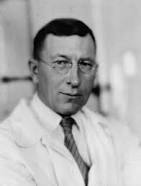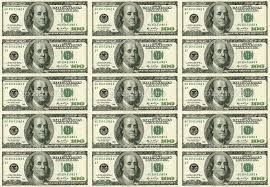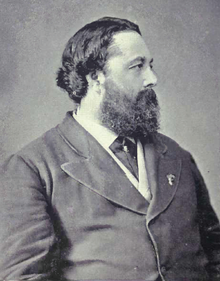The odometer is a widely-recognized device that gauges a vehicle’s traveled distance. The odometer displays a variety of numbers to depict the host vehicle’s engine rotation, and it catalogues distance through the vehicle’s tachometer. While the odometer has seen several popular renditions in its day, its actual creation is very spread out.Vitruvius, living in Rome around 15 B.C. was an engineer and architecture. Visit real money casino and make money online.
The man intended to catalogue a wheel’s distance and he created a small frame to do it. The frame mounted a wheel similar to a wheelbarrow frame;with each revolution it dropped small rocks into an attached bucket. Technically speaking, this was the world’s first odometer.However, Chang Heng, the seismograph’s inventor, notably created the world’s first odometer with his popular rendition: a small figure striking a drum with every 0.5-kilometer distance.
Meanwhile, Blaise Pascal, living between 1623 and 1662, created an odometer prototype capable of measuring distance with a collection of wheels and gears. Labeling it the pascaline, Pascal was proud of his invention which was capable of placing separate gears into place through a collection of revolving “teeth.” This was the world’s first modern odometer, and its style became incredibly important for future mechanical creations.Win on online casinos real money.
The roadometer, an odometer version fashioned by Appleton Milo Harmon, Orson Pratt and William Clayton, was created in 1847. The device was attached to a small wagon side-section, and it cataloged the wheel’s revolutions. William Clayton was heavily inspired by pioneers within his life, and he’d figured a great need for mileage tracking when he’d noticed the toils associated with unknown distances. The roadometer became the Western world’s primary odometer blueprint, and its notoriety became heavily relied upon throughout the 20th century. The mechanism has had a number of renditions, but few reached the roadometer’s height or influence.

Frederick Banting focused upon insulin extraction in Canada in 1920. Observing insulin’s capacity for breaking down digestive secretions, Banting was the first man to focus on the pancreas’s inner secretion, and he’s regarded with holding a deep understanding of diabetes. Frederick Banting was a trained surgeon, but it was his understanding of the pancreas’s atrophied arteries which cemented his career. By learning how to keep extracted arteries in place, he discovered the use of inserting insulin islets.
Later, these islets were isolated, and “isletin,” a former word for insulin, was formed. Insulin testing was conducted on dogs the following July, and crude extracts were reformed into powerful doses. Insulin is considered a peptide hormone; it’s created within the pancreas’s beta cells. Insulin, as Banting understood, is vital for blood absorption and is incredibly important to fat tissue, skeletal muscles and bone matter.Insulin proteins likely emerged a billion years ago.
As it inhibits the body’s fat turnover for energy utilization, Insulin-related proteins were vital to basic life-form survival.Insulin ceases glucagon release; it therefore plays an integral role in metabolic disorders and diabetes. Blood glucose levels, when reaching dangerously low points, become subjected to glycogenolysis. This process stores glycogen in the body’s muscles and liver, turning it into glucose. This component also controls many other body operations, its vital attributes are required by many primary functions of the human body.
Diabetics depend on an external insulin supply, as their bodies cannot naturally produce it. People with “relative” diabetic insulin deficiency may require several dietary alterations, and a little less than half of individuals within the category require regular insulin supplementation.

Green ink has been utilized for currency since 1862; it was featured on many bank notes in 1857 created by Thomas Sterry Hunt, a Canadian professor teaching at Montreal’s McGill University. Hunt was a staff member and analytical chemist serving the Canadian Geological Survey who began experimenting with chromium-related materials.His green currency ink idea was proposed with the adoption of sesquioxide.
Also known as chromium trioxide, Sesquioxide is the main component of green currency ink. The component became incredibly important for both Canadian and American currency, and its rise was completed soon after his suggestion. While green currency ink took a little while to gain traction, it became widely recognized and widely utilized when it became mass-produced. To this day, Thomas Sterry Hunt is recognized for the creation of green currency ink, even though he was primarily concerned with research and implementation rather than the ink’s creation.

While green currency ink may not seem incredibly important, it is vital to the reduction of counterfeit bill production, as the ink is difficult to reproduce. Additionally, the ink cannot be dematerialized in acid or basic solutions. Green currency ink cannot be reproduced in photography, either, making it incredibly original in all regards. It is the ink’s difficulty to reproduce that has made it popular with Casinos. Many canadian online casinos – 2017’s top online casinos in canada – use the ink on their chips.
Hunt didn’t anticipate his invention’s usefulness, and he didn’t benefit much from its success. He sold his idea to the United States following his discovery and made much less than the idea was worth. He personally viewed the process as incredibly troublesome, and questioned his own profit within the mix. Hunt’s invention also became known for the popular term “greenbacks” within American culture — a reference to the ink’s deep green coloration.


